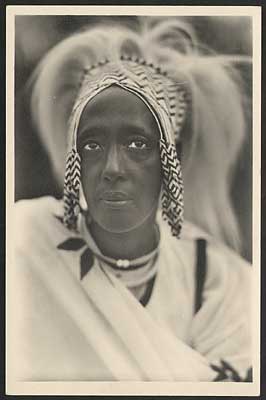
Section Three
Africans and Photography


The Tutsi of Rwanda first came into contact with the West at the end of the 19th century. Rwandan society was highly stratified. It was divided into the Tutsi, the ruling class who raised cattle, the Hutu who were farmers and the Twa who were hunters. Western discourses about the Tutsi emphasized race and social hierarchy. Based on their physical characteristics--they are among the tallest people in Africa--and their aristocratic demeanor, the Tutsi were assumed by early 20th-century Westerners to be the most "advanced" African peoples in the now-denounced evolutionary scheme promulgated at the time. Their appearance and elaborate court rituals made them perfect photographic subjects. The kings soon played into the wishes of photographers by staging for them the famous Ntore dances of young warriors. Pictures of these dances became signature images of Rwanda. Casimir Zagourski seems to have visited Rwanda twice and photographed King Yuhi V. Musinga--who ruled from 1897 until he was deposed by the Belgians in 1931--his son and successor Mutara III Rudahigwa (ruled 1931-1959) and Rudahigwa's mother. After the Second World War, Nyanza, the capital of the kingdom, became a stop on the tourist route through the region and was flooded by photographers and film makers, including the professionals of Inforcongo and Congopresse.
Pictured above
Mother of Mutara III Rudahigwa, the queen mother of Rwanda
Casimir Zagourski (1883-1944)
L'Afrique qui disparaît! Series 2, no. 100
c. 1937, silver gelatin print on postcard stock
Eliot Elisofon Photographic Archives
National Museum of African Art
Smithsonian Institution
1987-242101